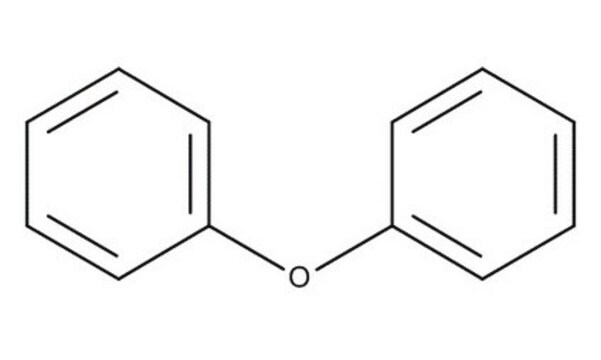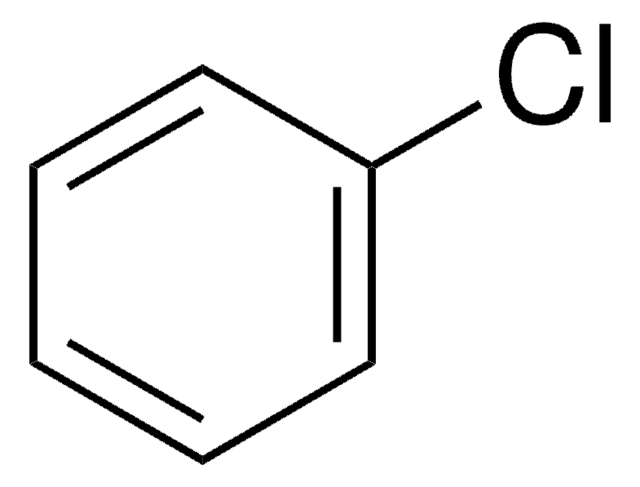67334
Diphenyl ether
Selectophore™, ≥99.9%
Sinônimo(s):
Diphenyl oxide, Phenyl ether
About This Item
Produtos recomendados
grau
for ion-selective electrodes
Nível de qualidade
densidade de vapor
>5.86 (25 °C, vs air)
pressão de vapor
<1 mmHg ( 20 °C)
linha de produto
Selectophore™
Ensaio
≥99.9% (GC)
≥99.9%
forma
solid
temperatura de autoignição
1144 °F
Lim. expl.
1.5 %
índice de refração
n20/D 1.579 (lit.)
pb
259 °C (lit.)
pf
25-27 °C (lit.)
27-29 °C
densidade
1.073 g/mL at 25 °C (lit.)
cadeia de caracteres SMILES
O(c1ccccc1)c2ccccc2
InChI
1S/C12H10O/c1-3-7-11(8-4-1)13-12-9-5-2-6-10-12/h1-10H
chave InChI
USIUVYZYUHIAEV-UHFFFAOYSA-N
Procurando produtos similares? Visita Guia de comparação de produtos
Categorias relacionadas
Descrição geral
Aplicação
Informações legais
Palavra indicadora
Danger
Frases de perigo
Declarações de precaução
Classificações de perigo
Aquatic Acute 1 - Aquatic Chronic 2 - Eye Irrit. 2 - Repr. 1B
Código de classe de armazenamento
6.1C - Combustible acute toxic Cat.3 / toxic compounds or compounds which causing chronic effects
Classe de risco de água (WGK)
WGK 2
Ponto de fulgor (°F)
239.0 °F - closed cup
Ponto de fulgor (°C)
115 °C - closed cup
Equipamento de proteção individual
dust mask type N95 (US), Eyeshields, Gloves
Escolha uma das versões mais recentes:
Já possui este produto?
Encontre a documentação dos produtos que você adquiriu recentemente na biblioteca de documentos.
Os clientes também visualizaram
Nossa equipe de cientistas tem experiência em todas as áreas de pesquisa, incluindo Life Sciences, ciência de materiais, síntese química, cromatografia, química analítica e muitas outras.
Entre em contato com a assistência técnica











